 部署系统:
部署系统:
Red Hat Enterprise Linux Server release 7.0
软件版本:apache-tomcat-7.0.92.tar.gz
keepalived-2.0.11.tar.gz
nginx-1.15.7.tar.gz (openssl-1.1.1.tar.gz pcre-8.40.tar.gz zlib-1.2.11.tar.gz )
架构图
vip:192.168.56.80-----> A:192.168.56.129 nginx(8001) tomcat (8080)
B:192.168.56.130 nginx(8001) tomcat (8080)
开始部署
1、准备两台虚拟机,网络我选择的是nat,如下图. 这种网络有点麻烦后面需要做一下映射。
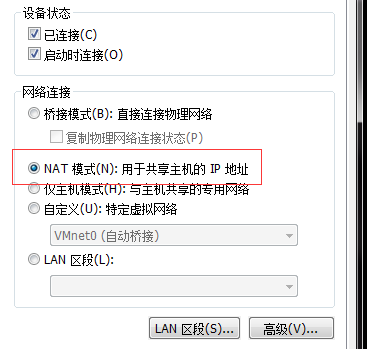
在vmware 编辑下虚拟网络编辑器,选择NAT设置
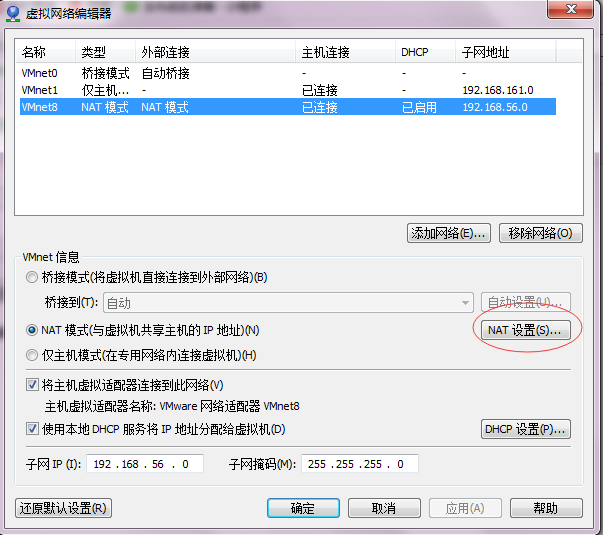
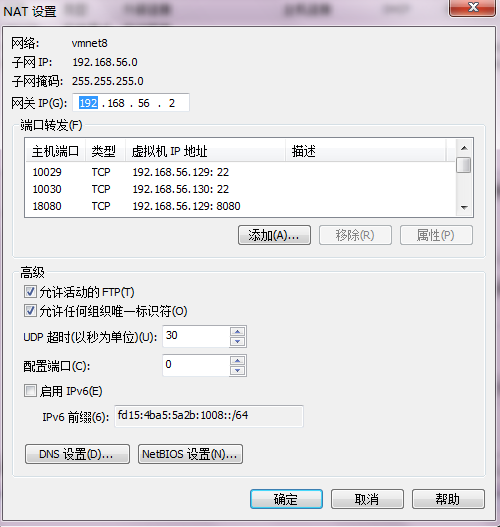


这样通过本机IP访问这此端口了.
服务器上网络准备如下:
[root@mrice_02 sbin]# cat /etc/sysconfig/network-scripts/ifcfg-eno16777736
TYPE=Ethernet
BOOTPROTO=static
DEFROUTE=yes
NAME=eno16777736
ONBOOT=yes
IPADDR0=192.168.56.130
PREFIX0=32
GATEWAY0=192.168.56.2
HWADDR=00:0c:29:b9:46:b5
PEERDNS=yes
2、服务器准备完毕后,开始安装软件.
tomcat 不用说了,解压后,编写一个默认页面.

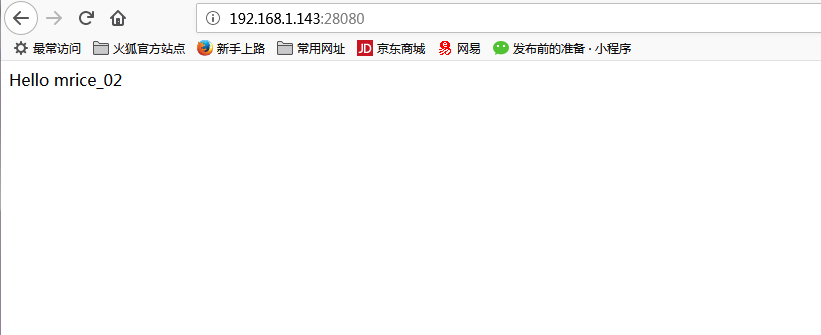
nginx 安装 请参考https://www.cnblogs.com/mrice/p/9882781.html
nginx.conf 配置文件如下 ,nginx配置可简单也可复杂,可根据生产中进行配置.
#user nobody; worker_processes 1; #error_log logs/error.log; #error_log logs/error.log notice; #error_log logs/error.log info; #pid logs/nginx.pid; events { worker_connections 1024; } http { include mime.types; default_type application/octet-stream; #log_format main '$remote_addr - $remote_user [$time_local] "$request" ' # '$status $body_bytes_sent "$http_referer" ' # '"$http_user_agent" "$http_x_forwarded_for"'; #access_log logs/access.log main; sendfile on; #tcp_nopush on; #keepalive_timeout 0; keepalive_timeout 65; #gzip on; upstream mrice{ server 192.168.56.129:8080 weight=3; server 192.168.56.130:8080 weight=3; } server { listen 8001; server_name localhost; #charset koi8-r; #access_log logs/host.access.log main; location / { root html; index index.html index.htm; } location /mrice { proxy_pass http://mrice/; } #error_page 404 /404.html; # redirect server error pages to the static page /50x.html # error_page 500 502 503 504 /50x.html; location = /50x.html { root html; } # proxy the PHP scripts to Apache listening on 127.0.0.1:80 # #location ~ .php$ { # proxy_pass http://127.0.0.1; #} # pass the PHP scripts to FastCGI server listening on 127.0.0.1:9000 # #location ~ .php$ { # root html; # fastcgi_pass 127.0.0.1:9000; # fastcgi_index index.php; # fastcgi_param SCRIPT_FILENAME /scripts$fastcgi_script_name; # include fastcgi_params; #} # deny access to .htaccess files, if Apache's document root # concurs with nginx's one # #location ~ /.ht { # deny all; #} } # another virtual host using mix of IP-, name-, and port-based configuration # #server { # listen 8000; # listen somename:8080; # server_name somename alias another.alias; # location / { # root html; # index index.html index.htm; # } #} # HTTPS server # #server { # listen 443 ssl; # server_name localhost; # ssl_certificate cert.pem; # ssl_certificate_key cert.key; # ssl_session_cache shared:SSL:1m; # ssl_session_timeout 5m; # ssl_ciphers HIGH:!aNULL:!MD5; # ssl_prefer_server_ciphers on; # location / { # root html; # index index.html index.htm; # } #} }
验证负载是否正常
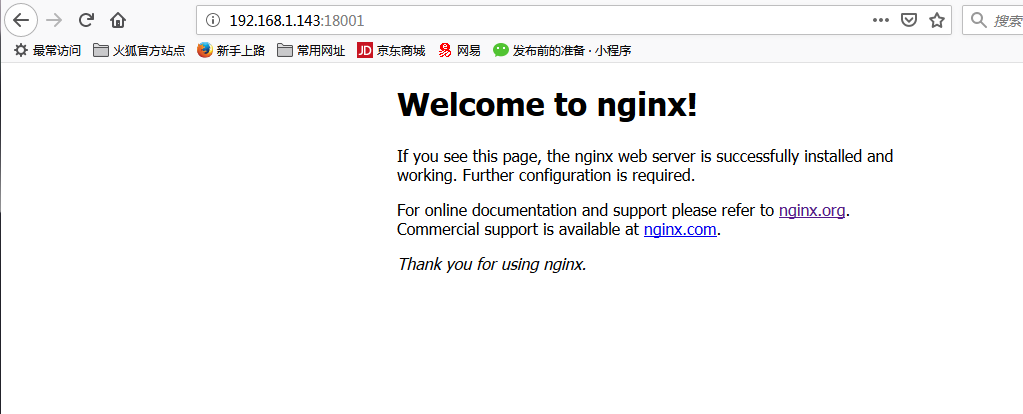
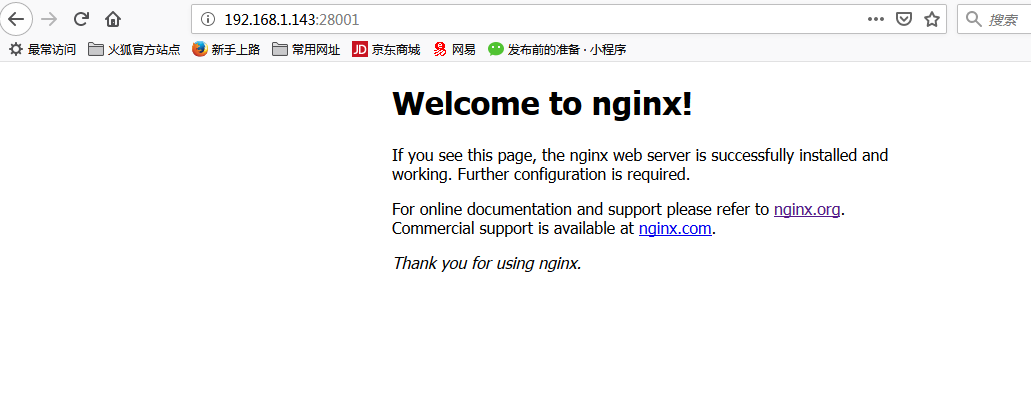
keepalived 安装
本次使用的是源码安装
tar -xzvf keepalived-2.0.11.tar.gz
cd keepalived-2.0.11
./configure --prefix=/usr/local/keepalived 安装目录根据需要修改
make && make install
cp keepalived-2.0.11/keepalived/etc/init.d/keepalived /etc/init.d/
cp /usr/local/keepalived/etc/keepalived/keepalived.conf /etc/keepalived/
cp keepalived-2.0.11/keepalived/etc/sysconfig/keepalived
cp /usr/local/keepalived/sbin/keepalived /usr/sbin/
配置keepalived.conf
! Configuration File for keepalived global_defs { notification_email { mrice_02@mrice.com } notification_email_from mrice@mrice.com smtp_server 192.168.56.8 smtp_connect_timeout 30 router_id mrice_backup } vrrp_script chk_http_port { script "/opt/nginx/check_nginx.sh" interval 2 weight 2 } vrrp_instance VI_1 { state BACKUP interface eno16777736 virtual_router_id 51 priority 99 advert_int 1 authentication { auth_type PASS auth_pass 1111 } virtual_ipaddress { 192.168.56.80 } }
其中配置文件中/opt/nginx/check_nginx.sh检查nginx进程
#!/bin/bash A=`ps -C nginx --no-header |wc -l` if [ $A -eq 0 ];then /usr/nginx/sbin/nginx #重启nginx if [ `ps -C nginx --no-header |wc -l` -eq 0 ];then #nginx重启失败 exit 1 else exit 0 fi else exit 0 fi
通过VIP访问是否正常。
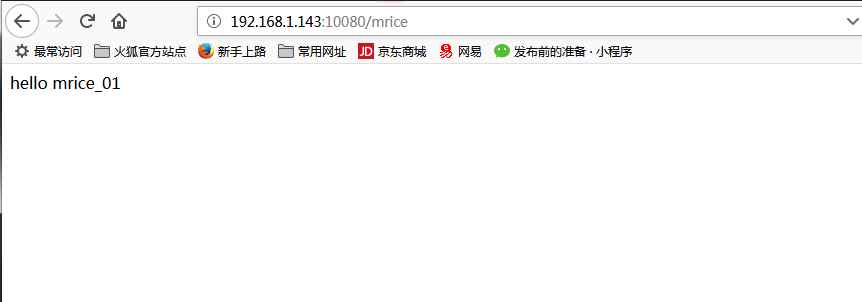
可查看VIP地址在哪台服务器上
[root@mrice_02 sbin]# ip addr show
1: lo: <LOOPBACK,UP,LOWER_UP> mtu 65536 qdisc noqueue state UNKNOWN
link/loopback 00:00:00:00:00:00 brd 00:00:00:00:00:00
inet 127.0.0.1/8 scope host lo
valid_lft forever preferred_lft forever
inet6 ::1/128 scope host
valid_lft forever preferred_lft forever
2: eno16777736: <BROADCAST,MULTICAST,UP,LOWER_UP> mtu 1500 qdisc pfifo_fast state UP qlen 1000
link/ether 00:0c:29:b9:46:b5 brd ff:ff:ff:ff:ff:ff
inet 192.168.56.130/32 brd 192.168.56.130 scope global eno16777736
valid_lft forever preferred_lft forever
inet 192.168.56.80/32 scope global eno16777736
valid_lft forever preferred_lft forever
inet6 fe80::20c:29ff:feb9:46b5/64 scope link
valid_lft forever preferred_lft forever
截止目前主备+负载配置完成,过程很简单,很多细节需要动手操作才会发现.